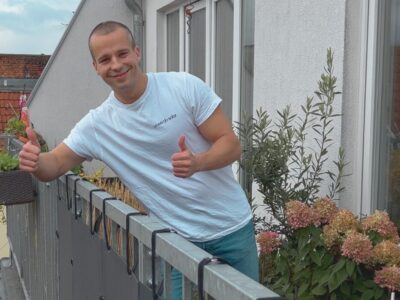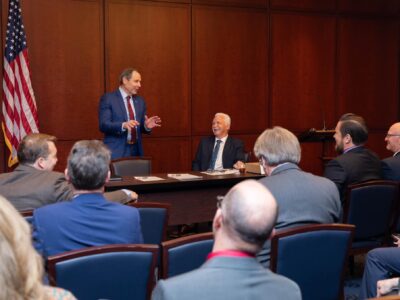In 1967, the New Jersey Americans debuted as an ABA team playing in the Teaneck Armory, built for the National Guard in 1938 for $1 million. In 2012, the team, now known as the Brooklyn Nets after many moves and name changes, moved into its facility, the Barclays Center — it cost around $1 billion. The money was spent not just on flashy VIP clubs and high-end dining experiences but also on an environmental mission.
“From site selection to materials used, we were focused on building one of the most sustainable arenas in the country,” asserted then-Nets part-owner Bruce Ratner. Less than a year after opening, the arena received a Silver Leadership in Energy and Environmental Design (LEED) Certification for New Construction from the U.S. Green Building Council (USGBC). It was the first professional sports and entertainment venue in the New York metro area to receive this designation.

The USGBC particularly hailed Barclays’ sustainable site design and construction methods. More than half of its materials, for example, contained recycled content, while more than 90% of wood adhered to Forest Stewardship Council guidelines.
The builders reduced carbon emissions by sourcing construction items within 500 miles of Brooklyn, NY, and diverted 85% of the construction waste from landfills.
The building’s design incorporated high-efficiency HVAC, a reduced interior lighting design, and a sophisticated thermal envelope, all contributing to minimizing energy consumption. The building reached a potable water usage level of nearly 50% under the baseline by installing waterless urinals, low-flow toilets, and low-flow lavatory and kitchen sinks.
Since receiving its Silver LEED, the Barclays Center has continued to expand its sustainability efforts. In 2016, the arena finished adding perhaps its most distinctive feature — a green roof.
Covering 135,000 square feet, this unique “lawn” is composed of 35,000 trays containing four mixes of perennial plants. Besides providing a striking visual look that changes colors with the seasons, the green roof lowers the urban heat island effect on hot days by keeping the building cooler and decreasing stormwater runoff by around 2 million gallons annually.
The arena teamed with Recycle Track Systems (RTS) in 2017 because recycling facilities rejected too many waste items. RTS created a split waste compactor that sorted plastics, cardboard, and organics without contaminating them and delivered the waste to the proper recycling sites.
RTS also assisted the arena in disposing of e-waste and LED lighting along with repurposing old furniture and carpet tiles. The Barclays Center eliminated plastic straws from concession stands; most food containers and flatware are compostable.
These measures diverted more than 1,000 tons of cardboard, metal, and plastic from landfills each year.
To combat food waste, the Barclays Center has given a new twist to “in-house catering.” Food not used at the concession stands gets used in “family meals” served to the arena’s staff instead of being thrown out. The Barclays’ two ORCA food digesters also process food scraps into an environmentally safe liquid form instead of being landfill waste. Similarly, in 2018, leftover food began being collected from the arena’s suites and separated into an organic compactor, resulting in 50 tons of food waste getting composted instead of being tossed away.

In 2018, the arena cut down on its electricity usage by putting 7,000 LED lights into its concourse areas. The Barclays Center has a “demand response program” with ConEdison where it turns down or off various lighting and cooling systems when the building isn’t being used on extremely hot days to balance out the higher usage on others.
Since it opened, the Barclays Center has been interested in getting the public involved in its sustainability mission. It launched the ‘B’ GREEN initiative to raise awareness on environmental topics like alternative transportation, energy efficiency, and recycling. More recently, the Nets got 437 trees planted in the tri-state area through its “Threes for Trees” program. It co-launched a food pantry in Brooklyn in 2021 that served almost 7,000 food insecure people in its first 10 months.
While the arena won multiple Building of the Year awards, the Barclays Center’s actions, whether on the community level or with its sustainability initiatives, hold a more impactful legacy. The Barclays Center stands as a great example, according to RTS co-founder Adam Pasquale, “of instituting forward-thinking sustainability policies, which have paved the way for other industries to take note.”





